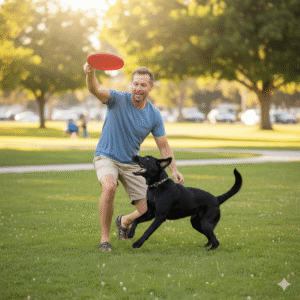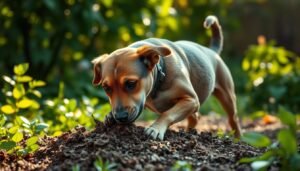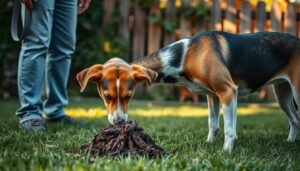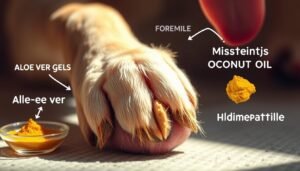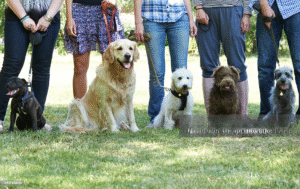As a dog owner, dealing with a dog’s heat cycle can be tough and messy. The bleeding is a big worry, but knowing about the heat cycle helps a lot. It’s key to caring for your dog right.
Dealing with a dog in heat needs patience and smart strategies. By knowing why they bleed and using good management, you can make it easier for both you and your pet.
Key Takeaways
- Understand the canine heat cycle to better manage bleeding.
- Use doggy diapers or sanitary pants to minimize mess.
- Keep your dog away from male dogs during this period.
- Maintain hygiene to prevent infections.
- Consult a veterinarian for professional advice.
Understanding the Heat Cycle in Dogs
The heat cycle, also known as estrus, is a natural part of a female dog’s life. It brings about distinct physical and behavioral changes.
What is the Heat Cycle?
The heat cycle is a complex process. It involves various physiological changes that prepare a female dog’s body for pregnancy. It is divided into four stages: proestrus, estrus, diestrus, and anestrus. Each stage has its own characteristics that are important for dog owners to know.
Signs Your Dog is in Heat
It’s crucial to recognize the signs of heat to manage your dog’s health and prevent unwanted breeding. Common signs include:
- Vaginal discharge, which can range from bloody to straw-colored
- Swelling of the vulva
- Changes in behavior, such as restlessness or increased affection
- Urination frequency may increase, and your dog may attract male dogs
For more detailed information on the signs of heat, you can visit PetMD’s article on dogs in heat.
Duration of the Heat Cycle
The duration of the heat cycle varies among breeds and individual dogs. It usually lasts between 2-4 weeks. But, some dogs may have shorter or longer cycles. Knowing the average duration and your dog’s specific stage can help you care for them better.
Why Dogs Bleed During Heat
Dogs often bleed during their heat cycle due to certain body changes. Knowing these changes can help you care for your dog better during this time.
Hormonal Changes
The heat cycle in dogs is mainly caused by hormone changes. As the body gets ready for breeding, estrogen makes the uterus thicken, causing bleeding. This is a natural part of their reproductive cycle but can worry owners who are not ready.
Estrogen levels surge during the proestrus phase, starting the heat cycle. This surge makes the uterine lining shed, leading to bleeding. Hormones like progesterone also play important roles at different cycle stages.
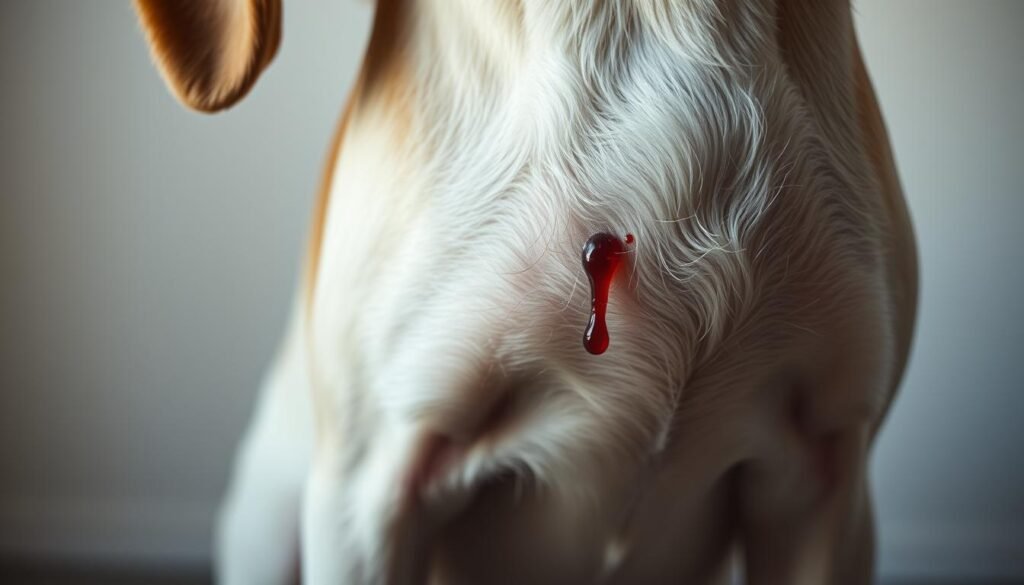
Typical Bleeding Patterns
Bleeding patterns in a dog’s heat cycle can vary a lot. Some dogs might have light spotting, while others might bleed more heavily. The bleeding can last anywhere from 7 to 14 days, but it can vary for each dog.
| Bleeding Characteristics | Typical Duration | Variations |
|---|---|---|
| Light Spotting | 7-10 days | Can be minimal, may not require dog diapers |
| Heavy Bleeding | 10-14 days | May require dog diapers or other management strategies |
Vets say knowing your dog’s bleeding pattern can help manage their heat cycle better. Managing the bleeding is not just about comfort. It’s also about keeping them clean and preventing health problems.
“The key to managing a dog’s heat cycle is understanding and anticipating the physiological changes that occur during this period.”
By recognizing the signs and symptoms of the heat cycle, you can take steps to keep your dog healthy and comfortable.
Natural Ways to Manage Bleeding
The heat cycle in dogs can be messy. But, there are natural ways to manage the bleeding. As a responsible dog owner, it’s important to try these options. They help keep your dog comfortable and clean.
Use of Doggie Diapers
Doggie diapers are a great solution. They keep the bleeding contained, preventing messes at home. This reduces the stress of constant cleaning. You can find doggie diapers in various sizes at pet stores or online.
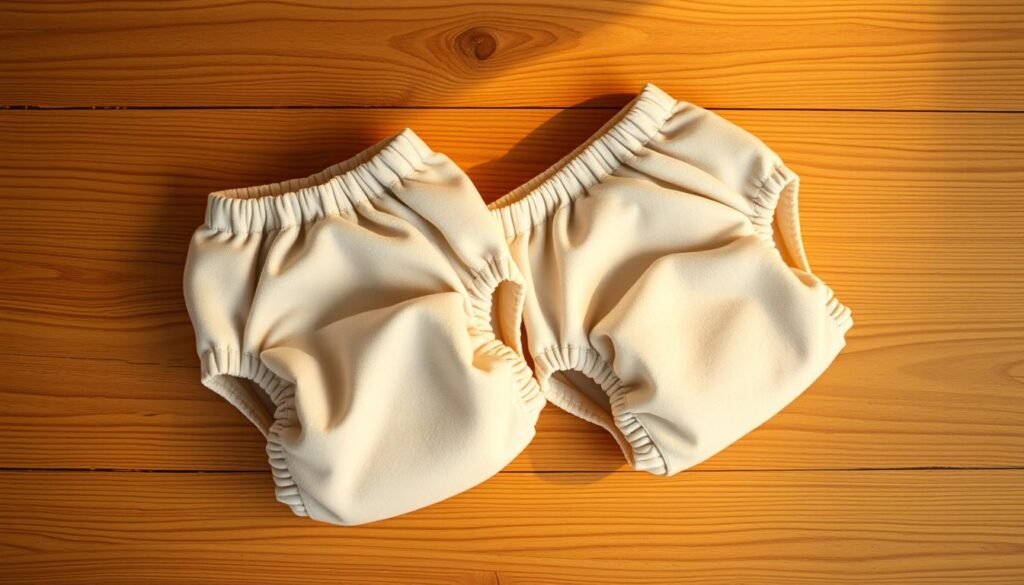
When picking doggie diapers, think about your dog’s size and comfort. It’s important to change them often to keep things clean and prevent skin problems. Regular checks on the diaper’s fit and your dog’s skin are crucial.
Restricting Movement and Activities
Limiting your dog’s movement and activities is another natural approach. Too much exercise can make the bleeding worse. Keeping your dog calm and relaxed helps prevent accidents and keeps her well.
Gentle, short walks are good. They help keep a routine without overexerting your dog. Watching your dog’s behavior and adjusting activities is key to managing the heat cycle well.
Medical Options for Managing Bleeding
Dogs with heavy bleeding during their heat cycle can find relief with medical options. These methods help regulate their cycle. While natural methods are often preferred, some dogs need more intensive treatments.
Hormonal treatments are a key medical approach. They help stabilize the hormonal changes during a dog’s heat cycle. This reduces the bleeding associated with it.
Hormonal Treatments
Hormonal treatments aim to regulate a dog’s heat cycle and lessen bleeding. These treatments involve giving medications that affect hormone levels, like progesterone and estrogen. By balancing these hormones, the bleeding can be lessened.
It’s crucial to talk to a vet to find the right hormonal treatment for your dog. The vet will look at the dog’s health, age, and bleeding severity. They will then suggest the best treatment.
| Hormonal Treatment | Description | Benefits |
|---|---|---|
| Progesterone Therapy | Regulates progesterone levels to stabilize the heat cycle | Reduces bleeding, stabilizes cycle |
| Estrogen Therapy | Manages estrogen levels to control bleeding | Decreases bleeding intensity, regulates cycle |
Spaying as a Long-term Solution
Many dog owners choose spaying to stop heat cycle bleeding for good. This surgery removes the ovaries and uterus. It ends the heat cycle and bleeding.
Spaying is a big decision that should be talked over with a vet. It’s a permanent fix but also prevents health problems like uterine infections and some cancers.
“Spaying your dog not only stops the heat cycle and associated bleeding but also reduces the risk of certain health issues, improving the dog’s overall quality of life.” – Veterinary Expert
Before spaying, consider the benefits and risks. Think about the dog’s age, health, and breed too.
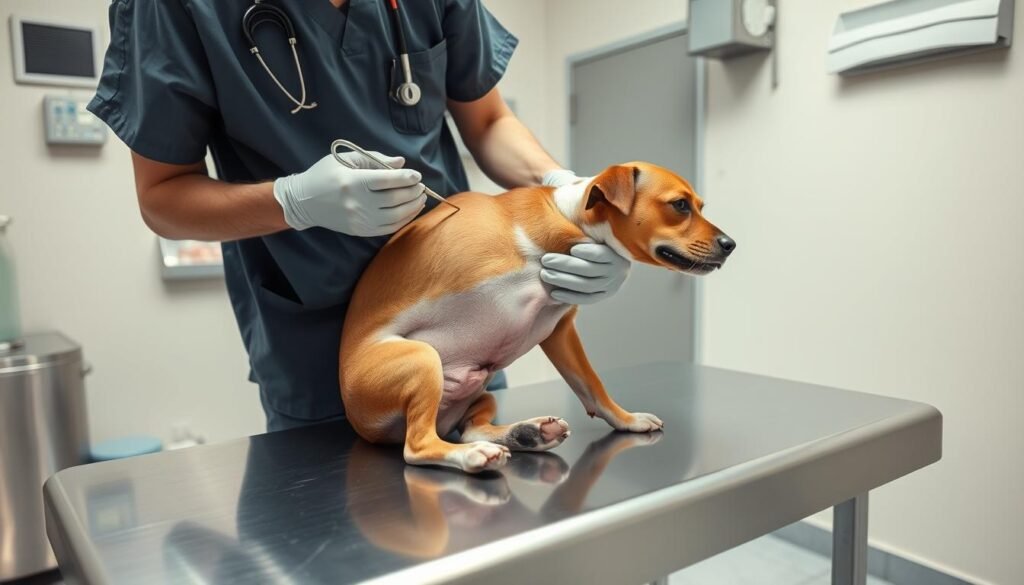
Grooming Tips for Dogs in Heat
Grooming your dog during their heat cycle needs extra care. It’s a tough time for dogs and their owners. But, with the right grooming, you can keep your dog clean and comfy.
Regular Bathing
Regular baths are key to keeping your dog clean. Bathe your dog every few days to stop bacteria and odors.
Some important things to remember when bathing include:
- Use lukewarm water to avoid making them uncomfortable
- Stay away from harsh shampoos that can irritate their skin
- Be gentle when cleaning their genital area to prevent infections
Maintaining Hygiene
Keeping your dog’s living area clean is important. Wash their bedding often and make sure their space is free from dirt and bacteria.
For more tips on managing your dog’s heat cycle, check out this resource.
Maintaining a Calm Environment
When your dog is in heat, it’s important to keep them calm and stress-free. A peaceful place can help them feel more comfortable. This can lessen the stress of their heat cycle.
To create a calm space, start by giving your dog a quiet place to rest. Pick a spot in your home where they can go when they feel stressed.
Reducing Stress for Your Dog
Keeping your dog’s stress levels down is crucial during their heat cycle. One way to do this is by sticking to a regular routine. This means feeding them at the same times, exercising, and playing together. It helps them feel secure and normal.
For more tips on caring for your dog during heat, check out this resource. It has lots of helpful advice.
“A calm environment can significantly reduce a dog’s stress levels, making their heat cycle more manageable.” – Dog Care Expert
Avoiding Encounters with Other Dogs
It’s also important to keep your dog away from other dogs. Meeting other dogs can cause stress and might even lead to unwanted breeding. So, it’s best to keep them on a leash during walks. Also, avoid dog parks or places where dogs often meet.
| Tips for Reducing Stress | Benefits |
|---|---|
| Maintain a consistent daily routine | Provides a sense of security and normalcy |
| Avoid encounters with other dogs | Reduces stress and prevents unwanted breeding |
| Provide a quiet space for rest | Helps your dog feel secure and relaxed |
By following these tips, you can make a calm and comfy space for your dog. This will help them get through their heat cycle easier and feel less stressed.
Nutrition Considerations
When my dog is in heat, the right diet is key. It helps prevent health problems.
Dogs need different nutrients during their heat cycle. A balanced diet supports their health and happiness.
Healthy Diet for Dogs in Heat
A good diet for dogs in heat includes quality protein, complex carbs, and essential fats. These nutrients keep my dog’s energy up and support her reproductive health.
- High-Quality Protein: Protein is essential for my dog’s health. It helps her muscles and keeps her energetic.
- Complex Carbohydrates: Carbs give energy and aid digestion. Whole grains and veggies are great choices.
- Essential Fatty Acids: These are important for skin and coat health. Omega-3 fatty acids in fish oil are very beneficial.
Supplements to Support Health
Some supplements can also help my dog’s health during her heat cycle.
- Omega-3 Fatty Acids: These can reduce inflammation and improve skin and coat health.
- Probiotics: Probiotics are good for digestion, which is important during the heat cycle.
- Antioxidants: Antioxidants protect cells and support overall health.
Always talk to a vet before adding supplements to my dog’s diet. This ensures they are safe and needed.
Preparing for Future Heat Cycles
To get ready for future heat cycles, keep an eye on your dog’s cycle and its patterns. Knowing this helps you meet her needs better.
Tracking Your Dog’s Cycle
Keep a record of when your dog’s heat cycles start and end. Use a calendar or a pet health app to do this. This way, you can spot patterns and guess when the next cycle will be.
For example, a table can help you keep track of your dog’s cycle:
| Cycle Start Date | Cycle End Date | Duration |
|---|---|---|
| February 1 | February 21 | 20 days |
| May 5 | May 25 | 20 days |
| August 1 | August 21 | 20 days |
Consulting Your Veterinarian
Talking to your vet is key when preparing for your dog’s heat cycles. They can share important insights and help you plan for her cycles.
As the Dog’s Trust says, knowing your dog’s heat cycle is crucial for her health.
“Understanding your dog’s reproductive cycle is vital for providing the best possible care.”
By teaming up with your vet and keeping a cycle record, you’ll be ready for your dog’s future heat cycles.
When to Consult a Veterinarian
As a dog owner, knowing when to seek help is key, mainly during her heat cycle. Managing your dog’s bleeding is important. Watch for signs of complications too.
Identifying Potential Complications
If your dog bleeds too much, has a fever, or seems tired, see a vet fast. These signs might mean a serious problem. For help with your dog’s heat cycle, check out Mountain Road Veterinary Hospital.
Ongoing Bleeding Concerns
If bleeding doesn’t stop or is heavy, talk to your vet. They can check for health issues. Your vet will give advice on managing your dog’s bleeding and health during her heat cycle.



